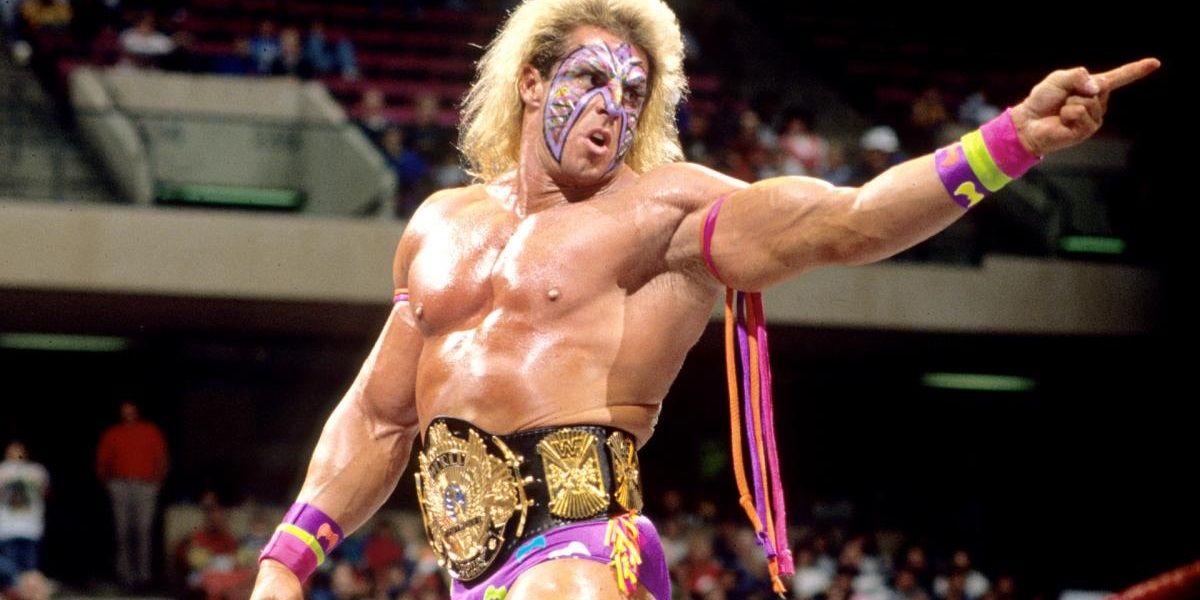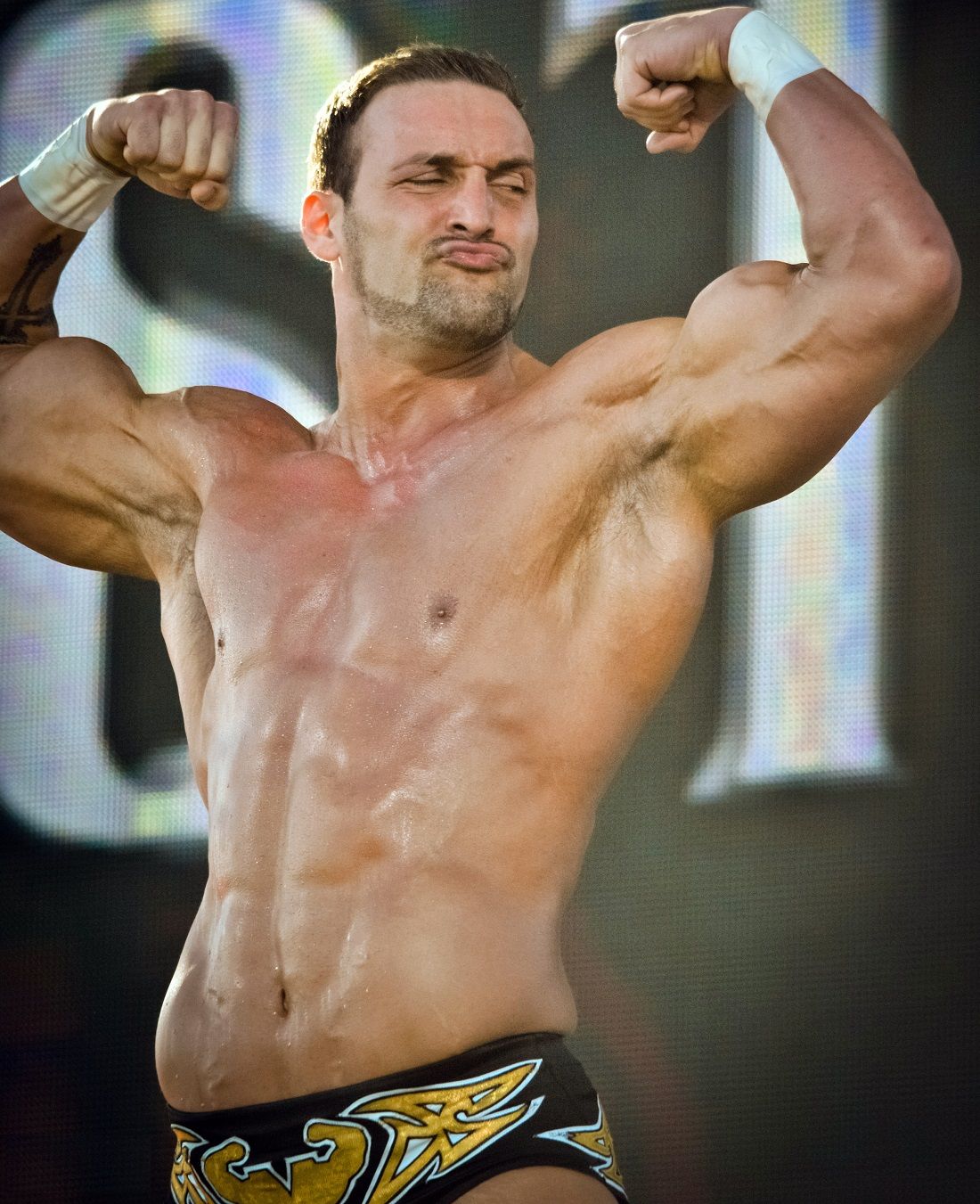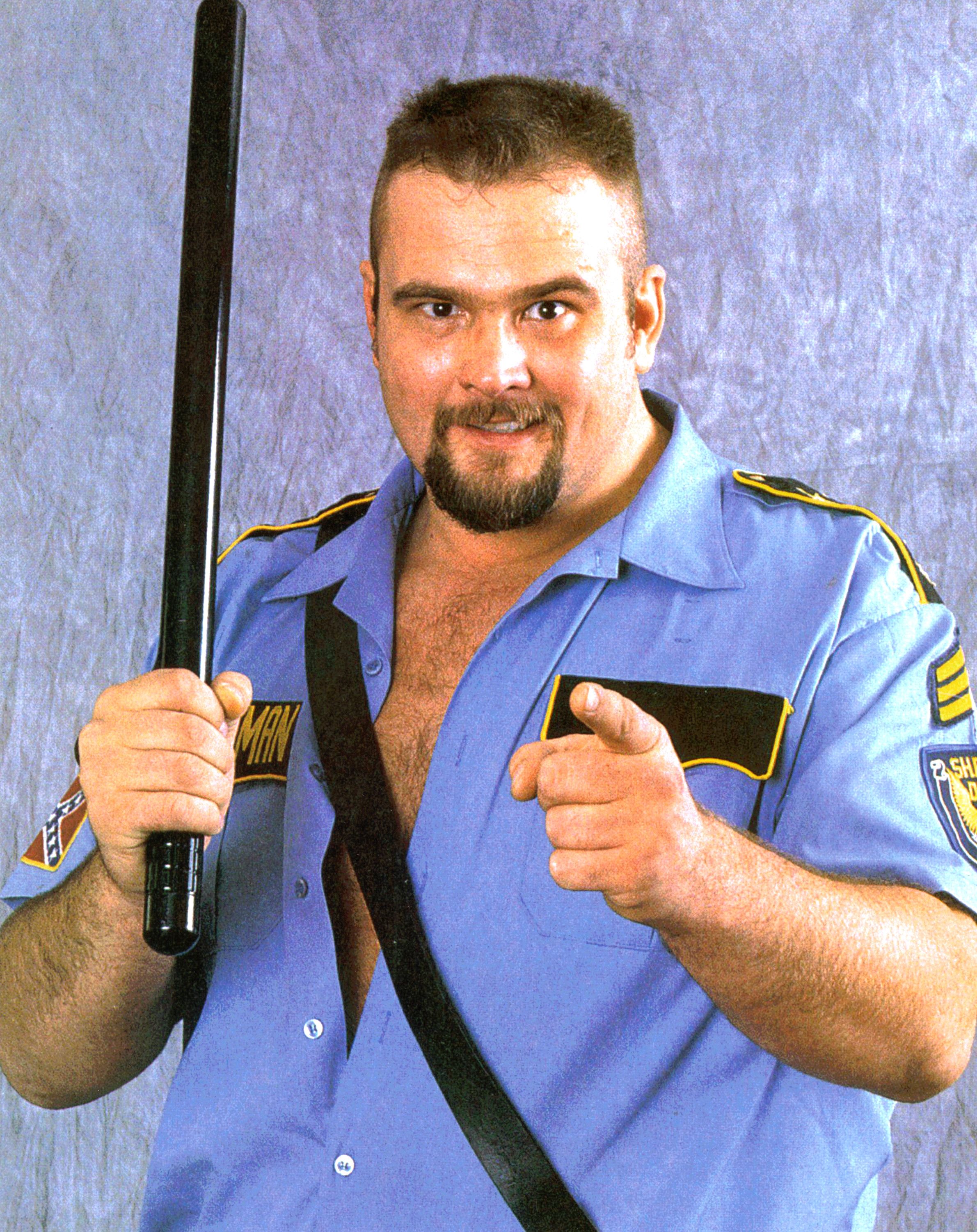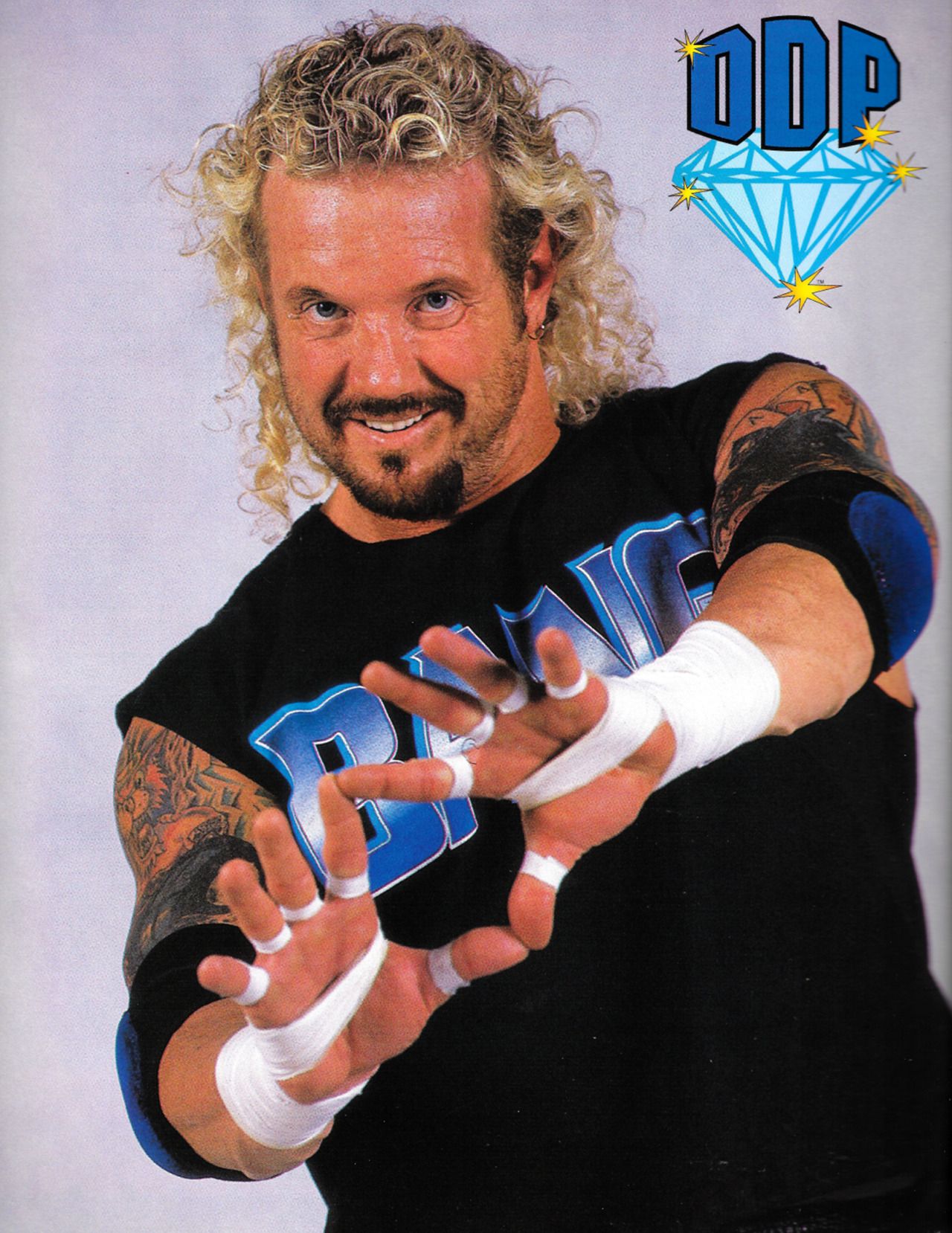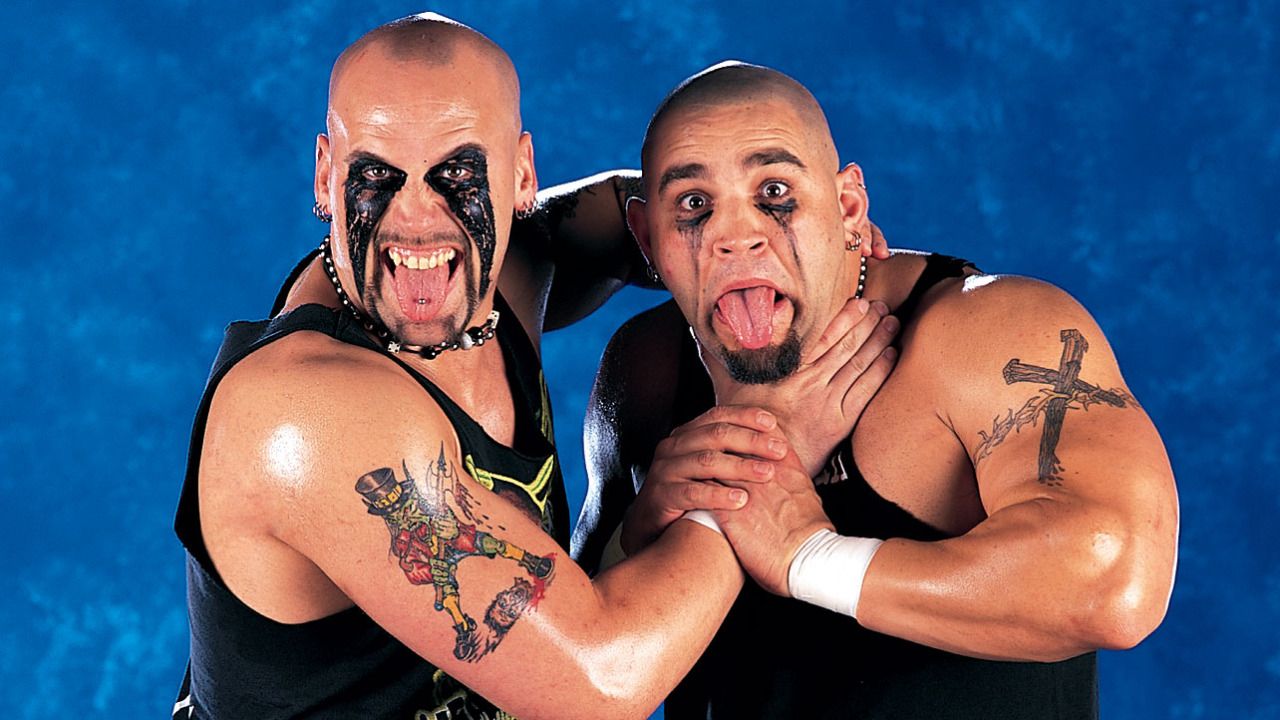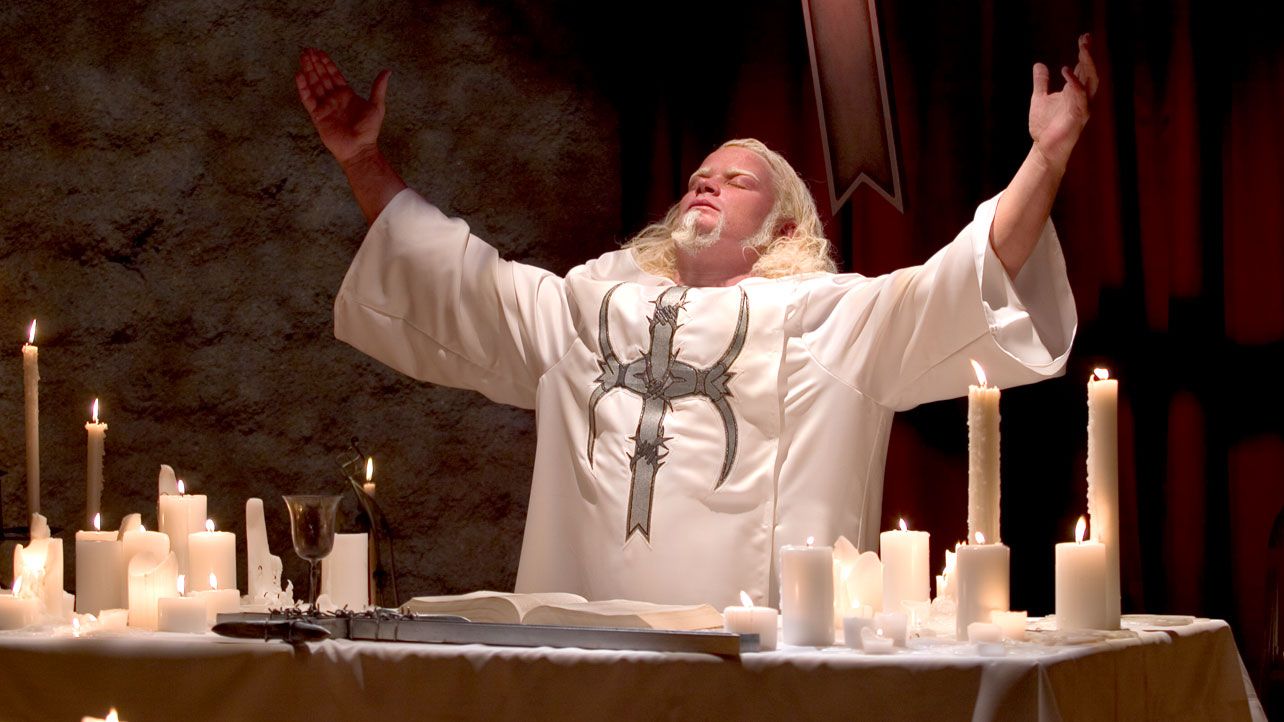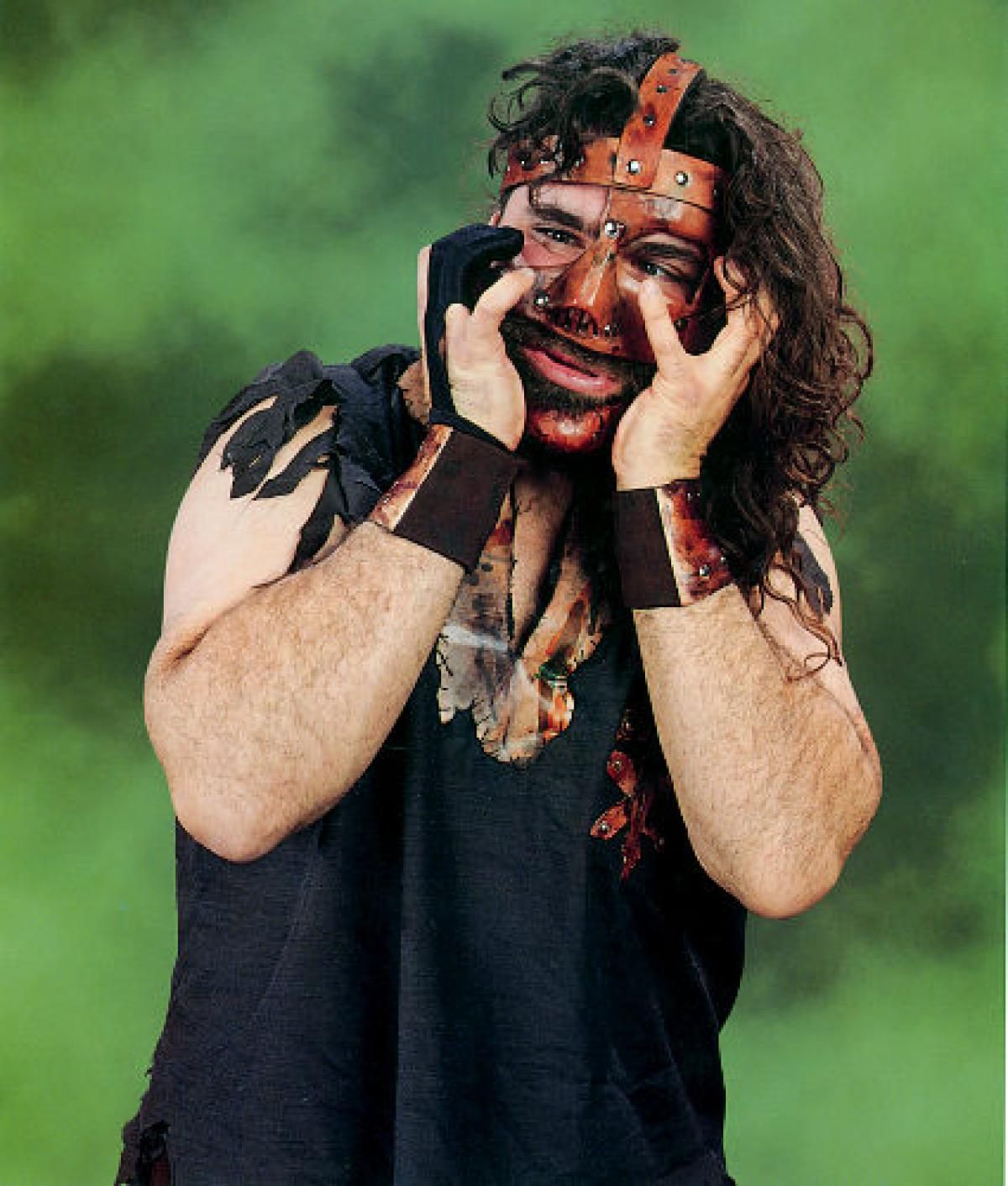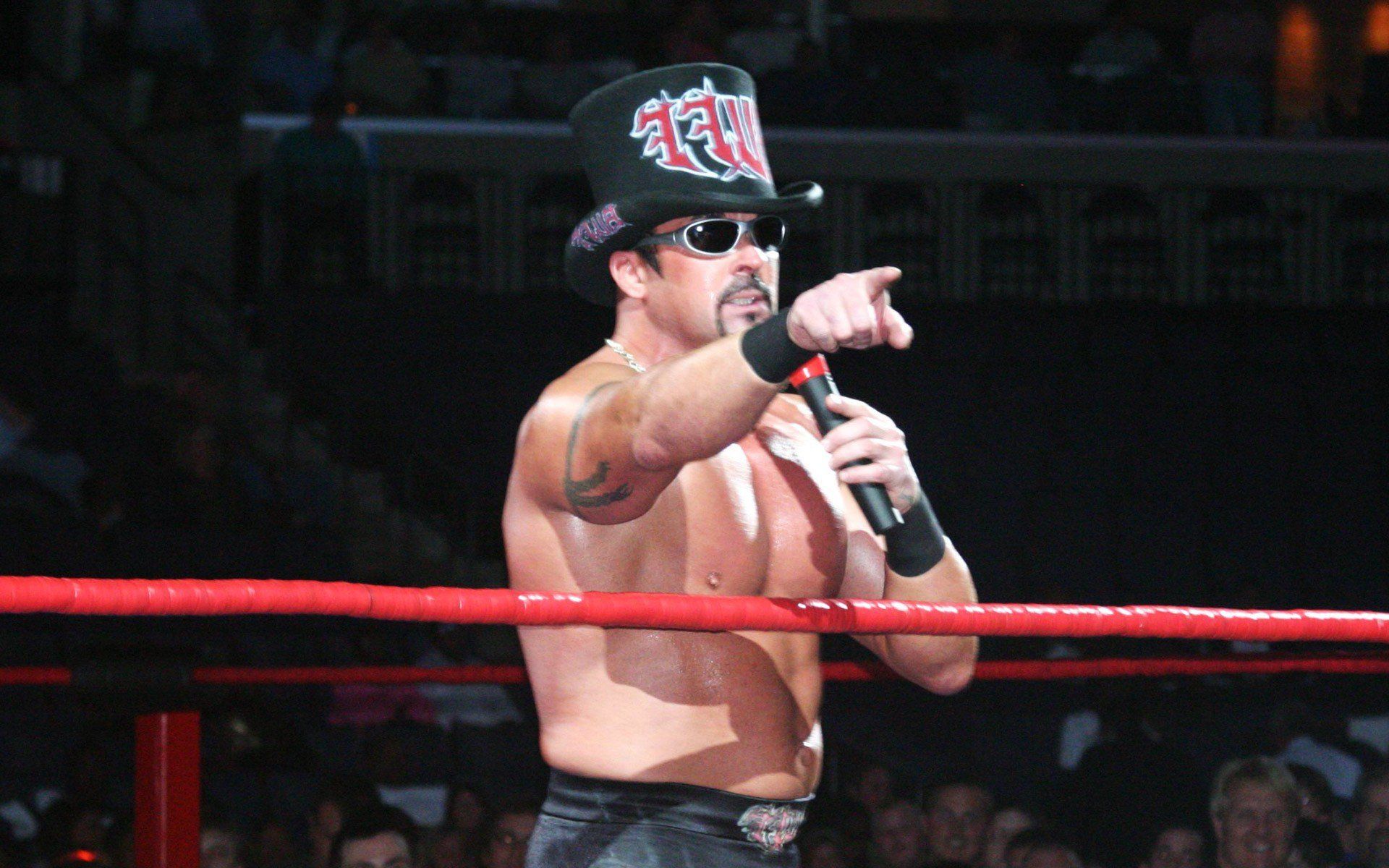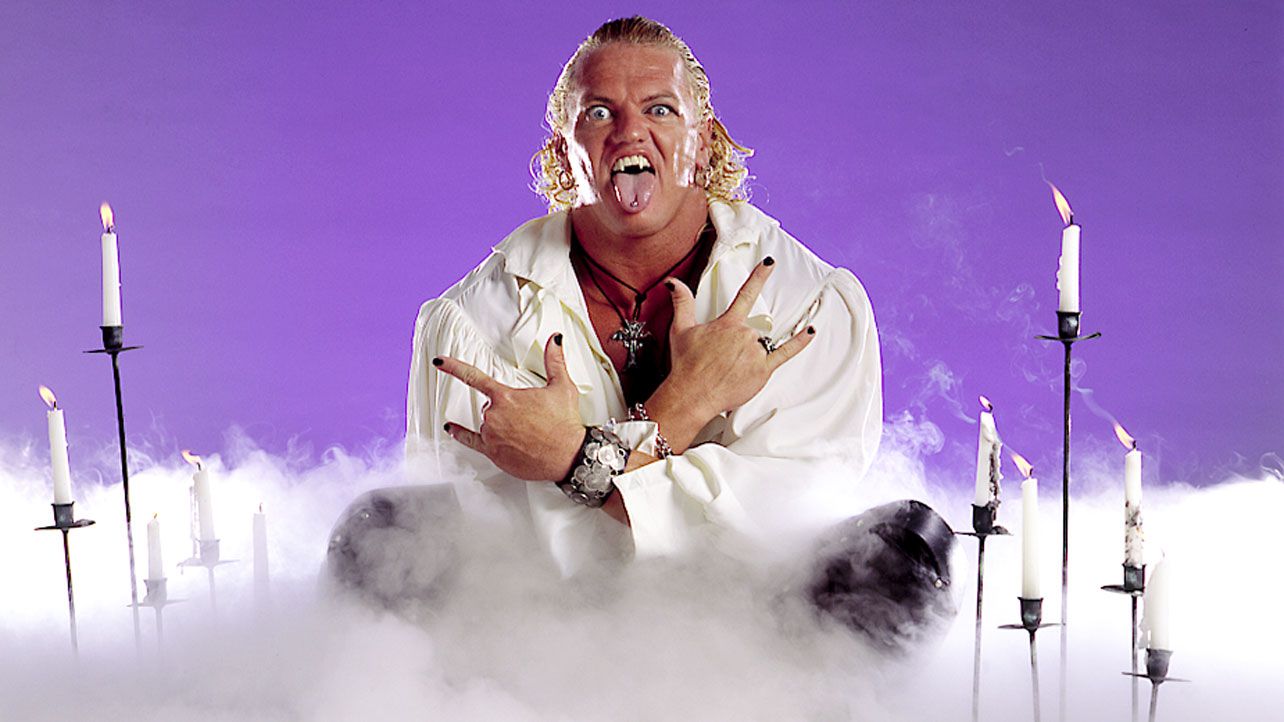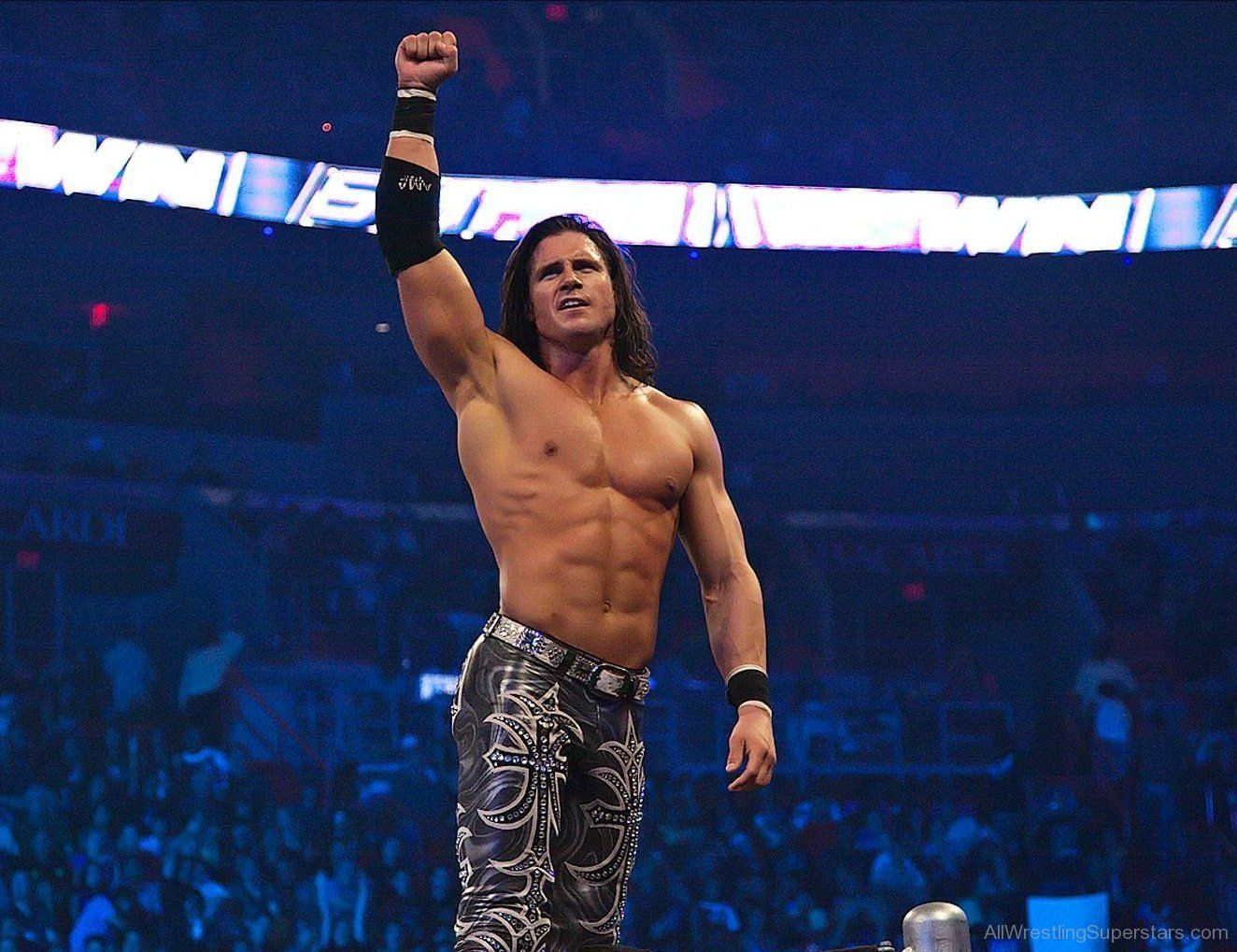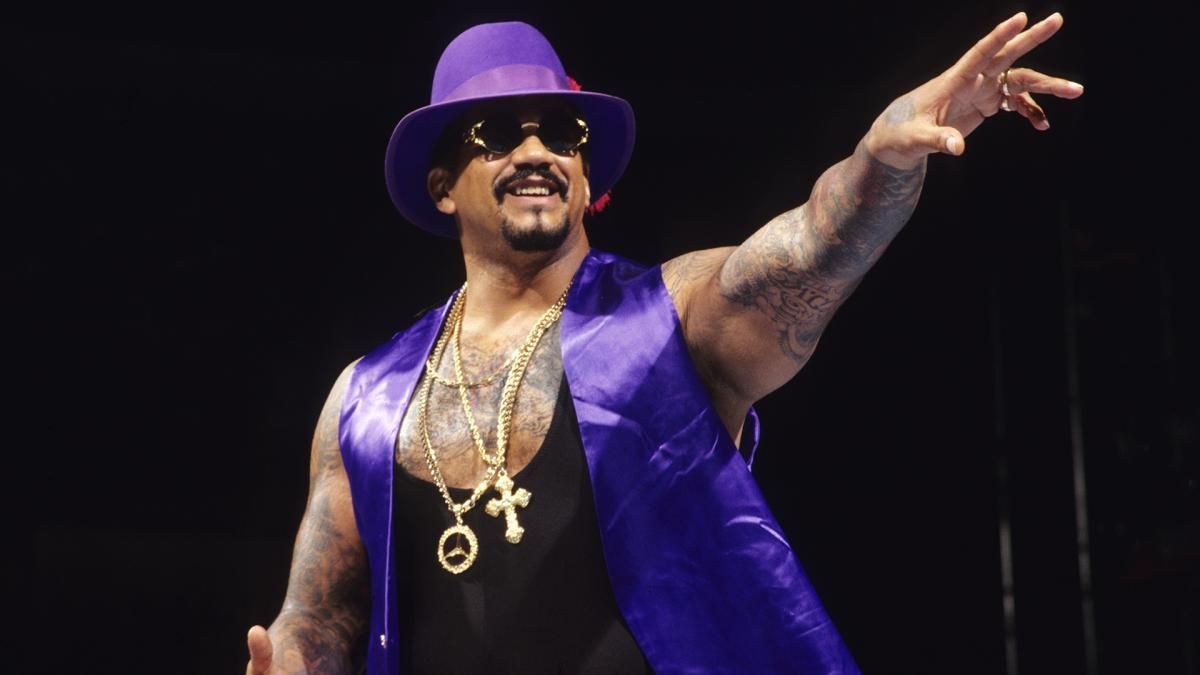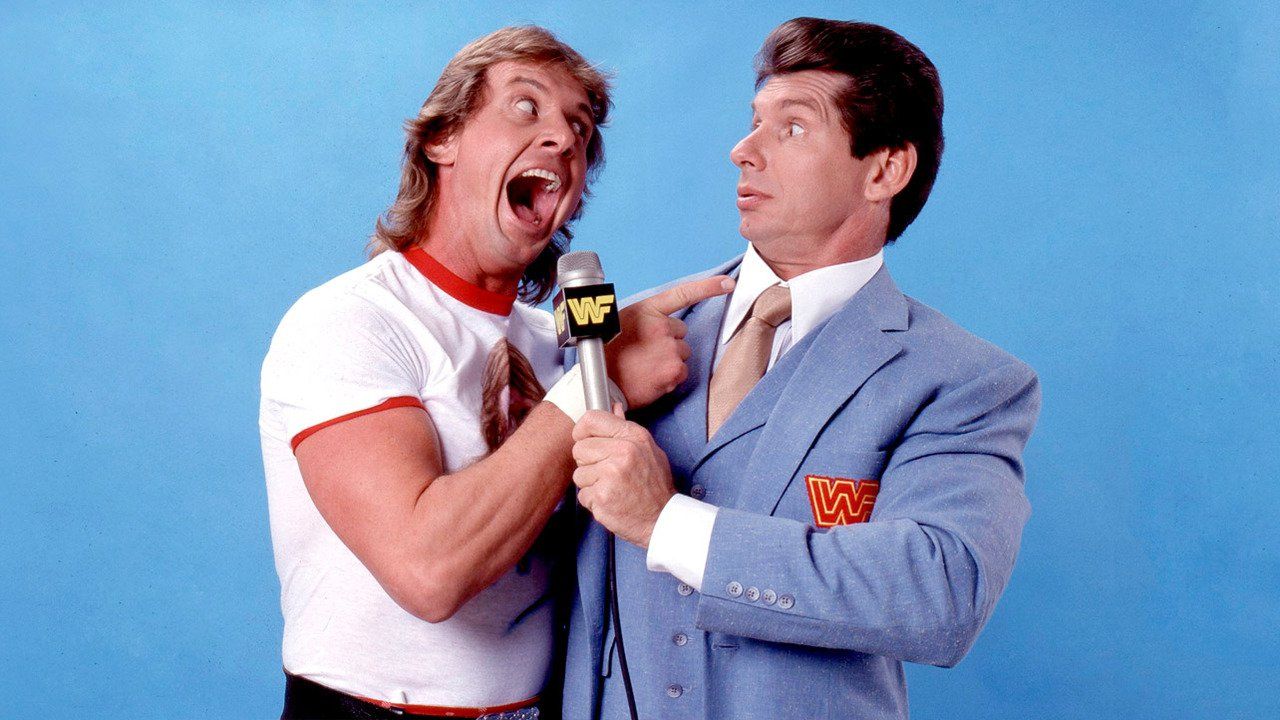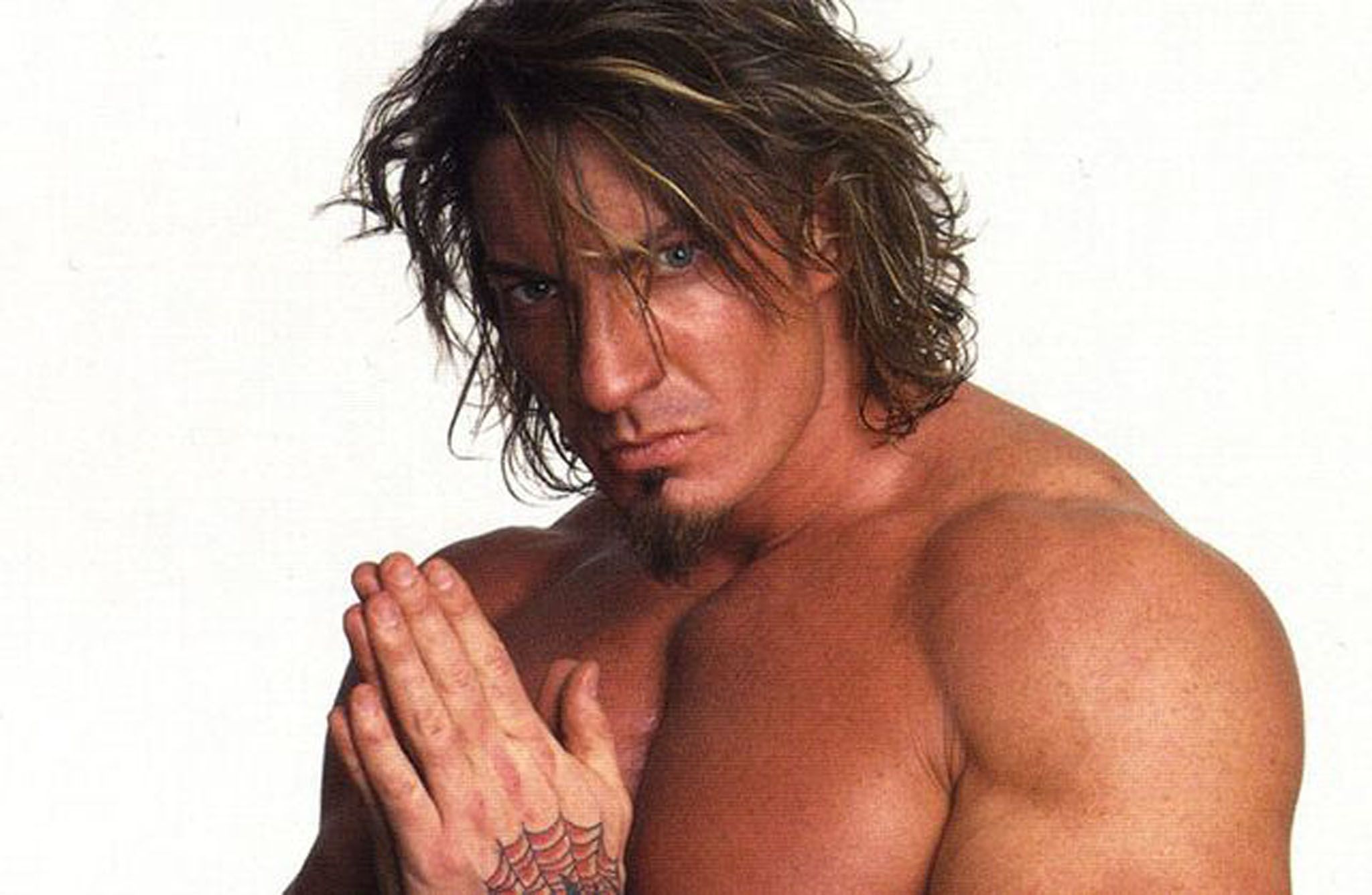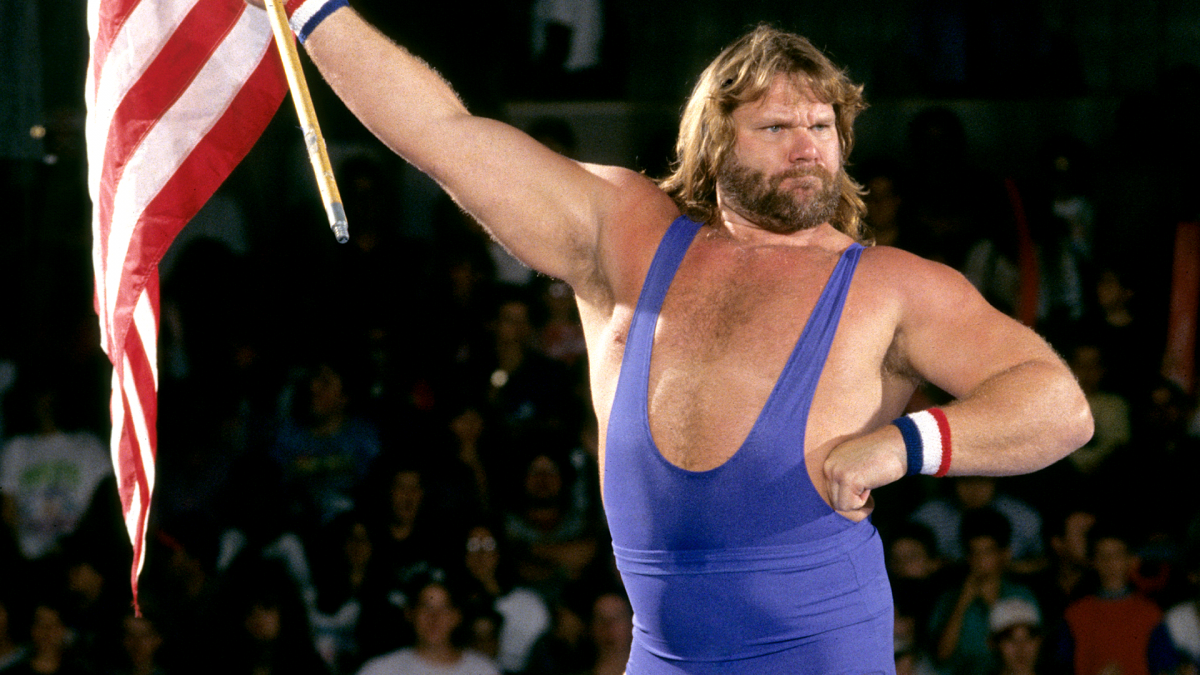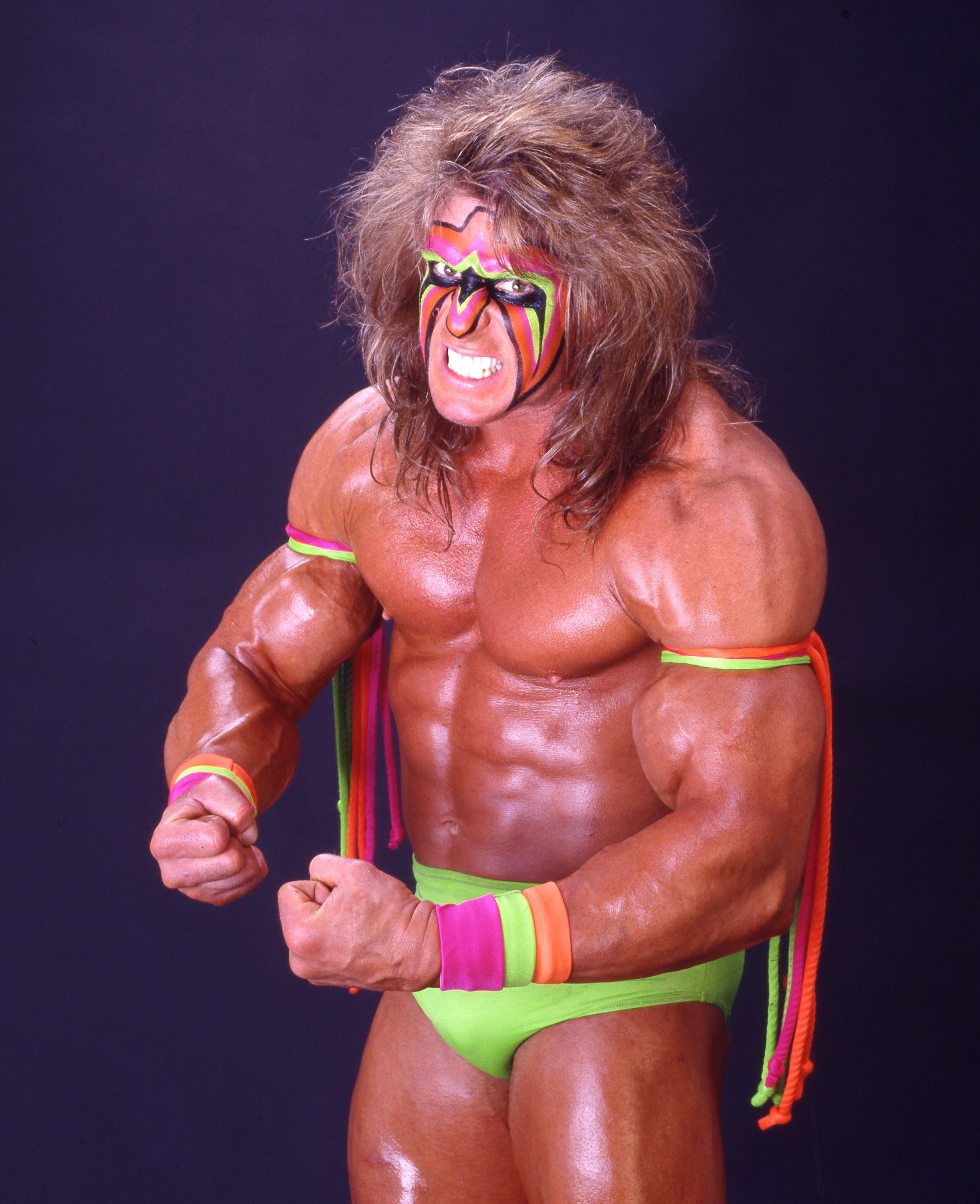Most of the all-time great gimmicks in the history of professional wrestling have been given to individual talents that were equally as compelling inside the squared circle. From "Macho Man" Randy Savage, to the "Million Dollar Man" Ted DiBiase, most of the name-recognizable gimmicks in the history of the business have been sported by quality in-ring talents. Occasionally however, a creative or booking team for a promotion will provide a memorable gimmick, on a lower-tier talent.
The results of a move like this are really a mixed bag. Sometimes, the character never caught fire even with the gimmick, remaining a mediocre draw for most, or all of their career. In other instances, the wrestler achieved near main event status simply because of their gimmick, and how they made it work for themselves. In these cases, the wrestler generally isn't thought of as sub-par in the ring, because the overall character has covered up their lack of ability in the ring. Whatever the example, it's likely that everyone on this list ended up having a better overall career, than they would have without their respective gimmicks.
There's no limitations on the promotion these wrestlers came from, though the list is certainly WCW and WWE heavy because of the reliance on over the top characters in each of these promotions. Understandably so, as they obviously cater to a much more mainstream audience, which is and was typically more receptive to stylistically pronounced characters. Except these ones struggled in the ring, and relied wholly on their persona. We've seen a fair share of these types in the wrestling industry over the years, and the most notable have been compiled here.
Ranked below are the top 15 great gimmicks that were given to terrible wrestlers.
15 15. Chris Masters
We had seen similar variations on the “Masterpiece” gimmick that Masters used upon his debut in WWE in 2005. Perhaps the one that first comes to mind was Curt Henning’s “Mr. Perfect” character during the early 1990’s. The difference was, Hennig was far better in the ring, and better on the mic to boot. Calling Masters “bad” in the ring would probably be a misnomer, but you would expect him to be better than he was given the character he was presented with. He was utilizing the kind of gimmick that had seen plenty of use, but was better suited in combination with an elite wrestling talent. Narcissistic characters generally play out better with a grounded, technically proficient in-ring style. Looks no further than Mr. Perfect and Ric Flair for proof of this, and the longevity it can provide a career in combination with the character. He was not nearly on the level of those two, and sank low into the ranks by his departure in 2011 (with a brief absence in between).
14 14. Big Boss Man
A WWE staple in the 80s and 90s, before leaving and then returning with an updated version of the character during the Attitude Era, the Big Boss Man was an entertaining mid-card character. He was limited in the ring, but nobody was asking him to produce five-star matches during his time with the company. He improved on the mic during the Attitude Era, establishing himself as a part of the burgeoning hardcore scene, which allowed him to wrestle entertaining matches, without being a good technical talent. Before that his deficiencies showed, though he still had an entertaining get up to alleviate it. It's hard to call the Boss Man a failure, and he actually probably falls closer to the title of "all-time great" in WWE, but that doesn't change the fact that his technical skill in the ring was mediocre. This was especially evident when he wrestled in WCW under his real name, Ray Traylor.
13 13. Abdullah The Butcher
While he never had much, if any, notable time spent with a mainstream promotion, Abdullah The Butcher was one of the first to widely utilize the methods of hardcore wrestling, years before it became a staple of most promotions. He was a super-heavyweight who wasn’t very good from the technical aspects in the ring, but his “Madman from Sudan” gimmick was great, and further applied later on in similar forms to talents like Sabu. The list of promotions he did wrestle for is far too many to list here, as he wrestled the world over for decades. He quickly earned respect from most die-hard wrestling fans, and because of his persona and violent matches that were ahead of their time, he built a sizable cult following for himself. Again, he was doing things in the ring by the late 1970's, that generally wouldn't be done for the next 20 years, so his influence is paramount. In the end, not a good “wrestler”, but an all-time character in the industry.
12 12. Diamond Dallas Page
It’s mostly all but forgotten now, but DDP actually began his wrestling career as a manager in the AWA, during the late 1980s. This explains the charisma that his character exhibited even early on as a singles competitor in WCW. In the end though, he wasn’t that great in the ring, and his character largely overshadowed his middling, mediocre matches. While the Diamond Cutter was a great finishing move, he offered little else inside the squared circle when it came down to it. A gimmick can only carry any talent so far, and it resulted in a relatively short shelf life for Page, who only really had success in WCW, and never caught on widely in WWE when the transition occurred in 2001. Still, his character remains one of the best for WCW in the late 1990s, and that was certainly a time when they could use all the help they could get.
11 11. The Headbangers (Mosh & Thrasher)
As far as tag teams go, their gimmick was always unique and entertaining enough, and represented a real transition into the Attitude Era at the time. They weren’t as fluid a team as a Rock N’ Roll Express, or The Rockers, but it didn’t really matter at the time, given the reduced state of the WWE’s tag division when they made their debut in 1996. The headbanger, part grunge, part heavy metal gimmick worked very well, and really was a breath of fresh air for a period of time. Most tag teams at that time were either derivative of good teams that were older, or far too corny to be taken seriously. They didn’t produce any classic matches, but provided some stability in the tag ranks, and were entertaining enough. In the end, they stuck around in some capacity for four years in WWE, so there was a clear draw for them, however unlikely it may have been.
10 10. Mordecai
Kevin Thorn’s religious zealot gimmick was another mid-card victory for WWE at the time. This character definitely suited Thorn better than his vampire gimmick that he used several years later. He wasn’t on TV for long, and indeed was sent down to OVW for additional training soon after debuting as Mordecai, given how mediocre he was in the ring. In total, the gimmick lasted less than a year, but for a more capable wrestler, could have been a marginal success for at least several years. As it stood, Thorn was never reliable enough in the ring to last for a substantial amount of time with the promotion. In a gimmick-heavy promotion such as WWE, this character worked entirely however, and it was a shame that they had to retire it so early due to Thorn's deficiencies in the ring. This was definitely his most memorable character.
9 9. Mankind
This one may come as a surprise, but if you stop and think about it, Mick Foley was never a great in-ring talent, no matter what promotion he was in. The “Mankind” gimmick is the most memorable character he ever portrayed, followed by Cactus Jack, but he was never a great athlete, and usually needed weapons to elevate his matches. It’s not a knock on him necessarily, but he definitely was conveniently placed in the hardcore niche, and because his character was so great, not many fans questioned his wrestling ability, at least at the time. The gimmick was timeless though, and was the subject of some of the mot entertaining moments from the Attitude Era. Any character that can get some kind of sizeable shelf life out of a prop like "Mr. Socko" should earn constant praise. Thankfully, Foley's Mankind character does, and it's one of the most timeless in the industry.
8 8. Buff Bagwell
For as much hate as Bagwell receives, if he wasn’t so boring in the ring, and was left out of the hands of WCW creative team of the late 1990’s, the gimmick probably could have worked with a more capable wrestler. Sure, it was always destined for the mid-cards, but it could have a better success rate if Bagwell wasn’t such a garden variety talent in general. Now, it's just rembered as a sour memory of the dying days of WCW, and Bagwell definitely didn't do much to help that. He made the gimmick slightly charismatic, but his overbearing, annoyingly eccentric persona just wasn’t that interesting in the end, and he went on to little success after WCW imploded in 2001. The character had potential, but given the company with which he wrestled, and the climate of the time period, this one is best left forgotten.
7 7. Gangrel
This vampire dominated gimmick was always mid-card fodder, but it was incredibly entertaining for what it set out to accomplish. So much in fact, that the “Gangrel” character has to be considered a staple of the Attitude Era, and was more memorable than not. In all, Gangrel was definitely the least talented member of The Brood, which also featured the likes of Edge and Christian, who both went on to big-time success in the singles ranks. Gangrel however, was sluggish in the ring, and was decidedly the weakest link in the faction. Relying too much on his character, he only totaled three years with WWE. There's not much of note about the rest of his career, as he only ever was able to find success in a gimmick-dominated promotion. That's not a knock on him, but his limitations were clear.
6 6. John Morrison
Morrison certainly wasn’t the worst wrestler on this list, but the electrifying, high-profile nature of his gimmick, definitely warranted a better in-ring talent. It was a character that was clearly designed to fill a main event caliber role, and Morrison usually didn’t produce the match quality that lived up to those expectations. Certainly not the biggest failure here, but for what it set out to do, it ultimately won’t be remembered as a success either. This was clearly intended to be a main event caliber gimmick, and Morrison's overall talent level just wasn't at that tier. Had they put this gimmick on a prime in-ring talent, the results would have been much better. As it stands, it only had limited success in retrospect, though it was definitely overshadowed by some larger WWE pitfalls at the time.
5 5. The Godfather
Another Attitude Era character that was remembered fondly solely because of the gimmick, Charles Wright’s portrayal of The Godfather, was a highlight of the late 1990’s mid card. Wright had served stints with other gimmicks throughout the decade, such as Papa Shango and Kama, but he struck gold with this one that emphasized prostitutes. Go figure. He was never good in the ring, but that clearly wasn’t the subject of conversation with this character, so it really didn’t matter. It stuck for about as long as it could have, before being removed from television. Perfect gimmick for the time and place. Definitely wouldn't be replicated now, with the backlash it would receive (and even then, the subject was hardly accepted), but back in the late 1990s it fit nicely within a sphere of edgy WWE gimmicks. Overall, one of the more memorable aspects of the Attitude Era.
4 4. "Rowdy" Roddy Piper
Piper was so charismatic and memorable on the mic, combined with his antics, that it wasn’t always remembered how mediocre and limited he was in the ring. He certainly could throw a barrage of punches, but besides that, his move set wasn’t anything out of the ordinary, and he typically had to be carried in the good matches he did have. His character is an all-timer in WWE, and he truly had some of the most legendary rants on the mic ever recorded, but outside of a chaotic brawl, he wasn’t offering much else inside the squared circle. Then again, he never really had to in his circumstances, but it does deserve mention for a topic like this. His success is a testament to the fact that there are multiple ways to succeed in the world of professional wrestling. Piper is a legend for his mic skills and personality alone, so the fact that he was limited in the ring doesn't really matter so much as it would otherwise.
3 3. Sean O'Haire
O’Haire’s character had a lot of potential at the turn of the century, but he was never good enough on his own in the ring to fully supplement it. The “Devil’s Advocate” character was certainly edgy enough to appeal to the audience of the time period, and definitely could have succeeded under a different talent, but he always had to be carried in the ring, which hurt his appeal. Though he had improved since his days with WCW several years earlier, it was pretty clear that he wasn't on the level in the ring that would allow him to reach great heights in wrestling. He had some tag success with Chuck Palumbo in the tag ranks (as seemingly everyone did), and his appearances with Roddy Piper were certainly memorable, but he just really wasn’t cut out for the business. O'Haire is a great example of a quality athlete who just wasn't able to adapt to the style of professional wrestling, and adhere to the level of in-ring quality needed. He retired soon after, to focus on a MMA career. Unfortunately, he took his own life in 2014.
2 2. "Hacksaw" Jim Duggan
Duggan’s gimmick was certainly all over WWE television in the late 1980’s, but he was one of the worst technicians ever to hold a gimmick of such popularity. At the time, where WWE placed less emphasis on quality matches, he could get away with it, but in retrospect, he was truly awful in every capacity in the squared circle. He always wrestled as if you took an average NFL guard and gave him three days worth of training. Again, he was certainly aided by the time period, but he just offered nothing in the ring. As such, he never held a title with the company, and never had a moment that would qualify as historically important. He was mid-card fodder, and was destined to stay in those ranks as long as he was with the ompany. The gimmick was over with the fans for a long time though, and ended up being quite memorable, so that has to count for something.
1 1. Ultimate Warrior
The Ultimate Warrior was all flash and persona looking back on it. A clear product of his time. When he jettisoned on the WWE scene in 1987, a mainstream wrestling audience had never seen that kind of ferocity from a single wrestler. The character looked primal and crazy in the best possible way, and was a defining personality of the time period in WWE. Unfortunately, the Warrior just wasn’t cut out for consistently quality matches in the main event scene. His move set was extremely limited, and got farther on gusto than he did with match construction or great feats in the ring. In the end, he had departed by 1993, and was never a consistent figure with the company again, despite a brief three month return in 1996. In the hands of a different talent, that results may have erred more on the side of longevity. As it stood, the Warrior was everyone's favorite wrestler for about a one year period, before fading into normalcy, and then obscurity like so many others before him.

